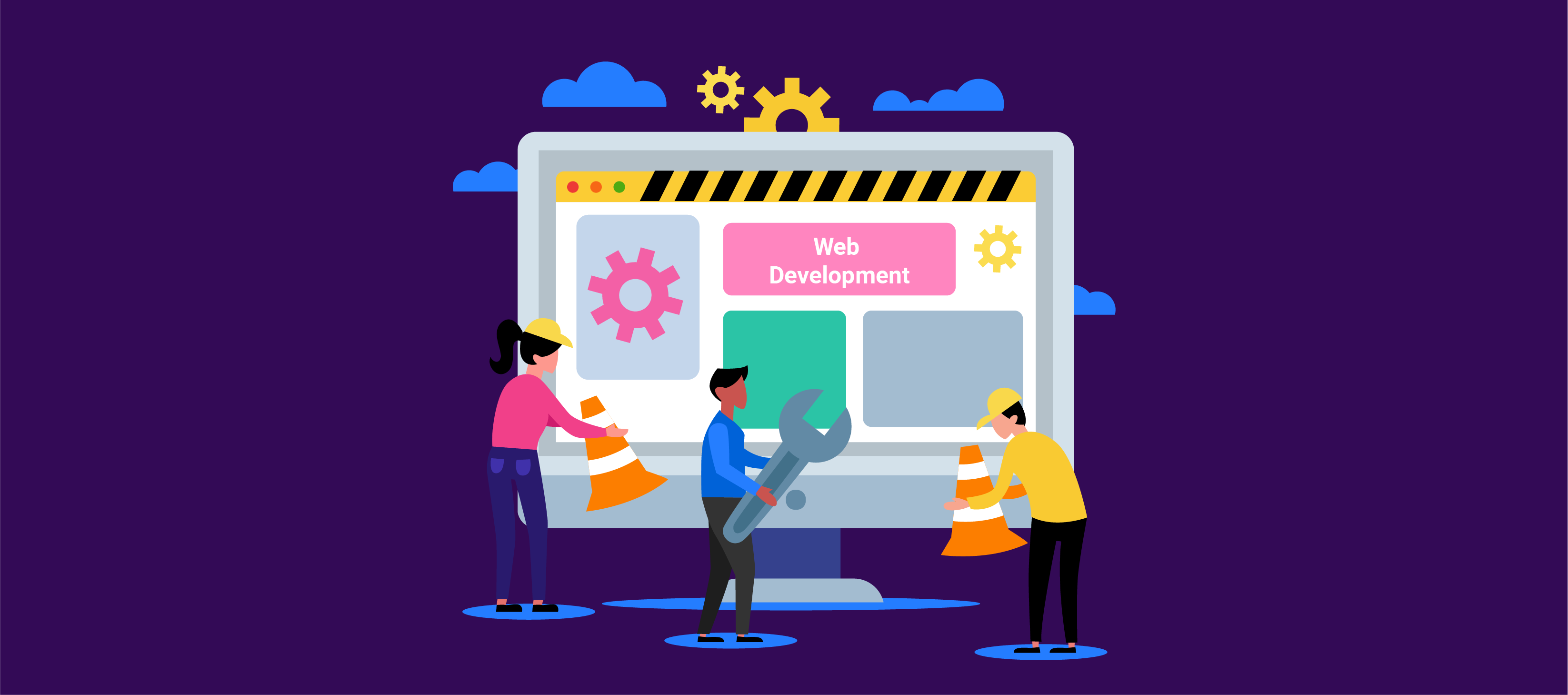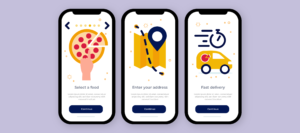Welcome to the future of web development! With each passing year, the landscape of web development evolves, and new frameworks emerge, bringing innovative ways to create modern, responsive, and user-friendly web applications. In 2023, the web development world is abuzz with excitement as developers eagerly explore the latest technologies and tools to build cutting-edge websites and web applications.
According to Statista, Node.js will surpass React.js as the most popular web framework among developers globally by 2022. The poll found that 42.62 % of the respondents used React.js, and 47.12 % used Node.js. This blog will look closer at the 20 best web development frameworks expected to impact 2023 significantly. These frameworks are carefully selected based on their popularity, features, community support, and potential to simplify web development.
From frontend frameworks like React, Angular, and Vue.js to backend frameworks like Django, Laravel, and Express, we will cover various frameworks that cater to different programming languages, platforms, and platform use cases. We will also explore frameworks for building APIs, mobile apps, and more, giving you a comprehensive overview of the best tools available for web development in 2023.
Join us on this exciting journey as we delve into the world of web frameworks and discover the top 20 Framework for Web Development expected to shape the web development landscape in 2023. Let’s dive in and explore the future of web development with these cutting-edge frameworks!
Web Development Frameworks: A Comprehensive Guide
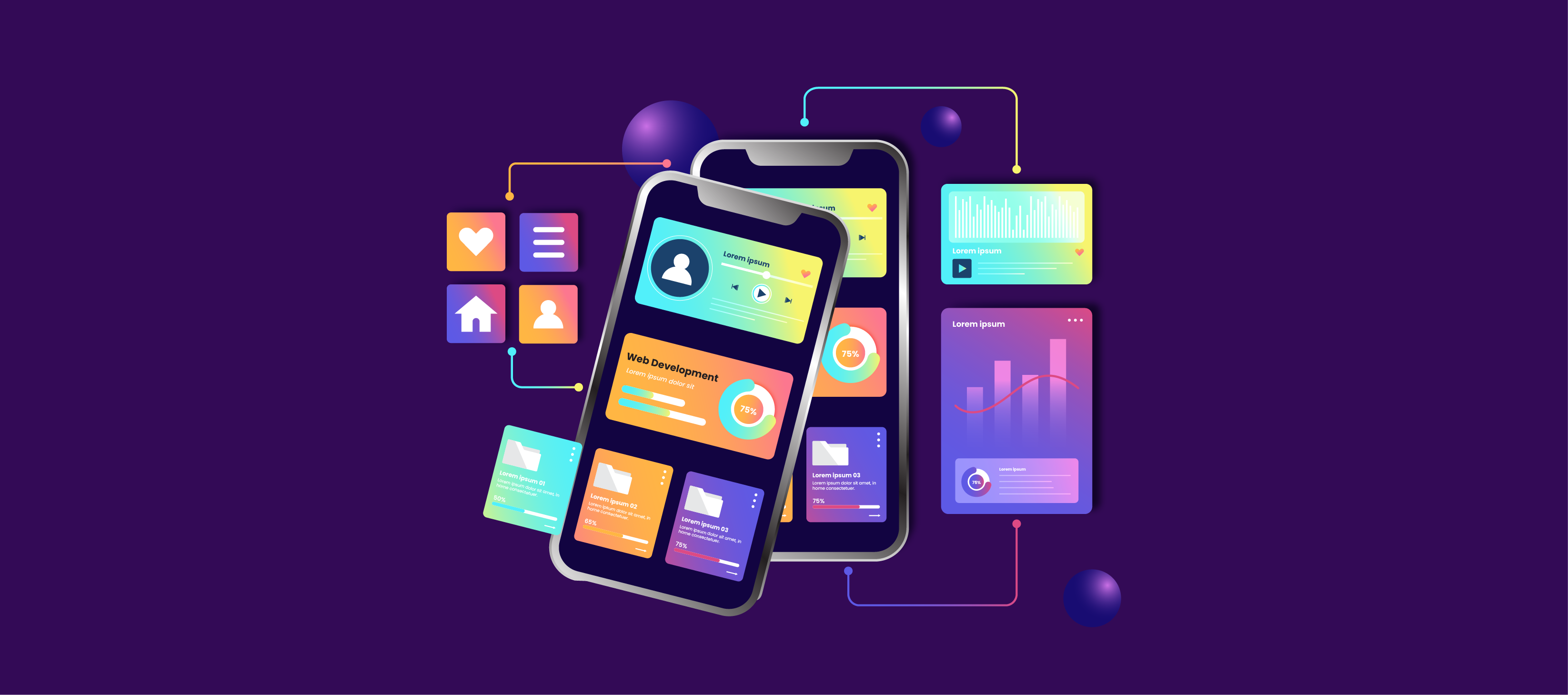
A web development framework is a collection of pre-written code, libraries, and tools that provide a structure for developers to build web applications quickly and efficiently. These frameworks allow developers to focus on building the unique features of their applications rather than starting from scratch and writing low-level code to handle common tasks.
Additionally, it typically includes various features, such as a templating engine, database integration, URL routing, form handling, and session management. These features are often organized into modules or libraries that can be used as needed.
Some popular web development frameworks include Ruby on Rails, Django, Flask, Laravel, and Express.js. These frameworks are designed to work with specific programming languages and may have their syntax and conventions.
Using a web development framework can help developers save time, increase productivity, and build web applications that are more secure and maintainable. By providing a consistent structure and set of tools, frameworks allow developers to work more efficiently and collaborate more effectively on larger projects.
Different Web Development Frameworks
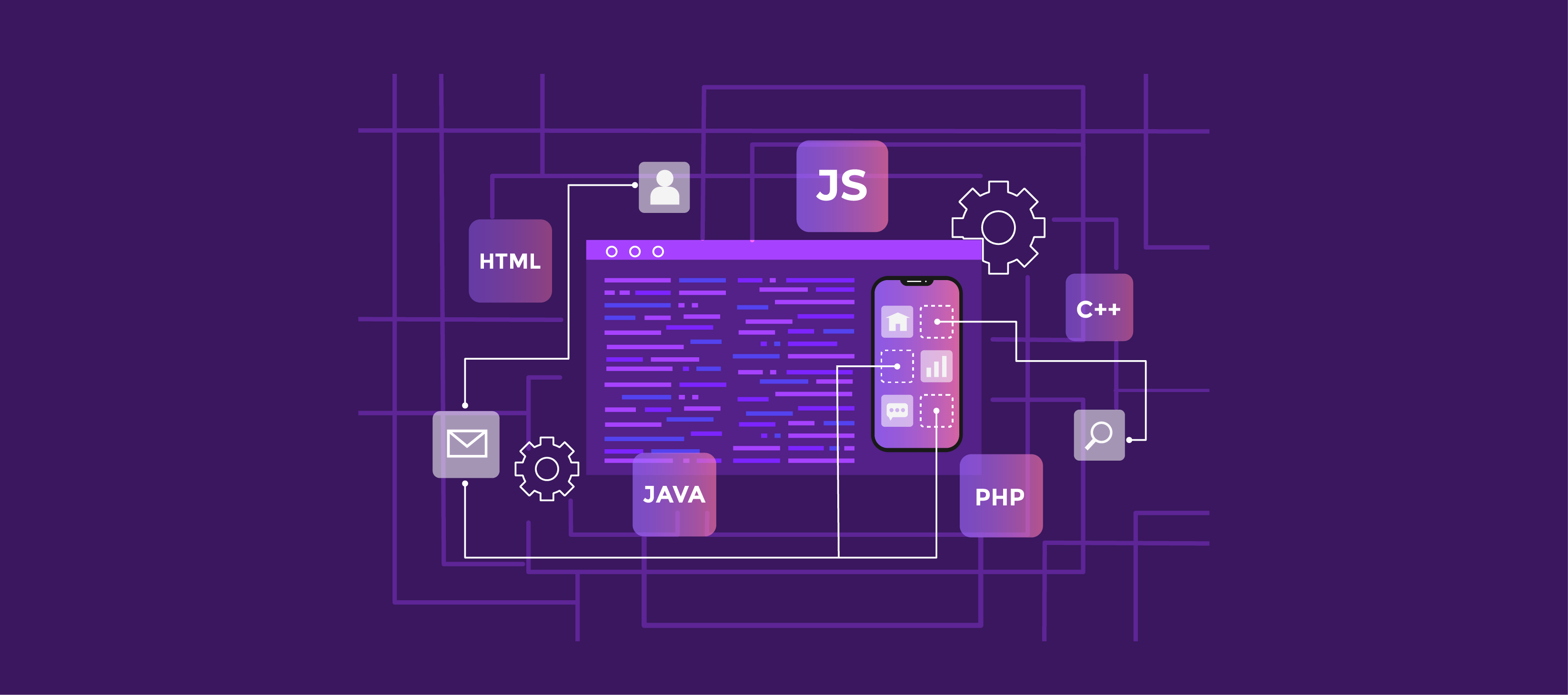
Web development frameworks can be broadly categorized into two types based on the technology they are built with front and backend frameworks.
1. Frontend frameworks:
Frontend frameworks are designed to simplify the development of the client-side (front end) of web applications. These frameworks provide tools and libraries to create interactive and dynamic user interfaces. Some popular frontend frameworks include:
- Angular: developed by Google, based on TypeScript, and follows a component-based architecture.
- React: developed by Facebook, based on JavaScript, and follows a component-based architecture.
2. Backend frameworks:
Backend frameworks are designed to simplify the development of the server-side (backend) of web applications. These frameworks provide tools and libraries to handle data storage, authentication, and security tasks. Some popular backend frameworks include:
- Django: a high-level Python web framework that follows the model-template-view (MTV) architectural pattern.
- Flask: a lightweight and flexible Python web framework that follows a microservices architectural pattern.
| Type of Framework | Frontend Frameworks | Backend Frameworks |
| Definition | Simplify client-side (frontend) web development | Simplify server-side (backend) web development |
| Examples | Angular, React, Vue.js | Django, Ruby on Rails, Flask |
| Key Features | Provides tools and libraries for creating interactive and dynamic user interfaces | Provides tools and libraries for handling data storage, authentication, and security |
| Architecture | Follows component-based architecture | Follows different architectural patterns, such as Model-View-Controller (MVC), model-template-view (MTV), or microservices |
| Technology | Built with JavaScript or TypeScript | Built with different programming languages such as Python, Ruby, or JavaScript |
In addition to these two broad categories, full-stack frameworks provide tools and libraries for both frontend and backend development. These frameworks offer a unified approach to web development, allowing developers to build both the client and server side of web applications using a single framework. Some popular full-stack frameworks include:
- Meteor: a full-stack JavaScript framework that includes both frontend and backend components.
- MEAN stack: a full-stack framework that includes MongoDB, Express.js, Angular, and Node.js.
Best Framework for Web Development
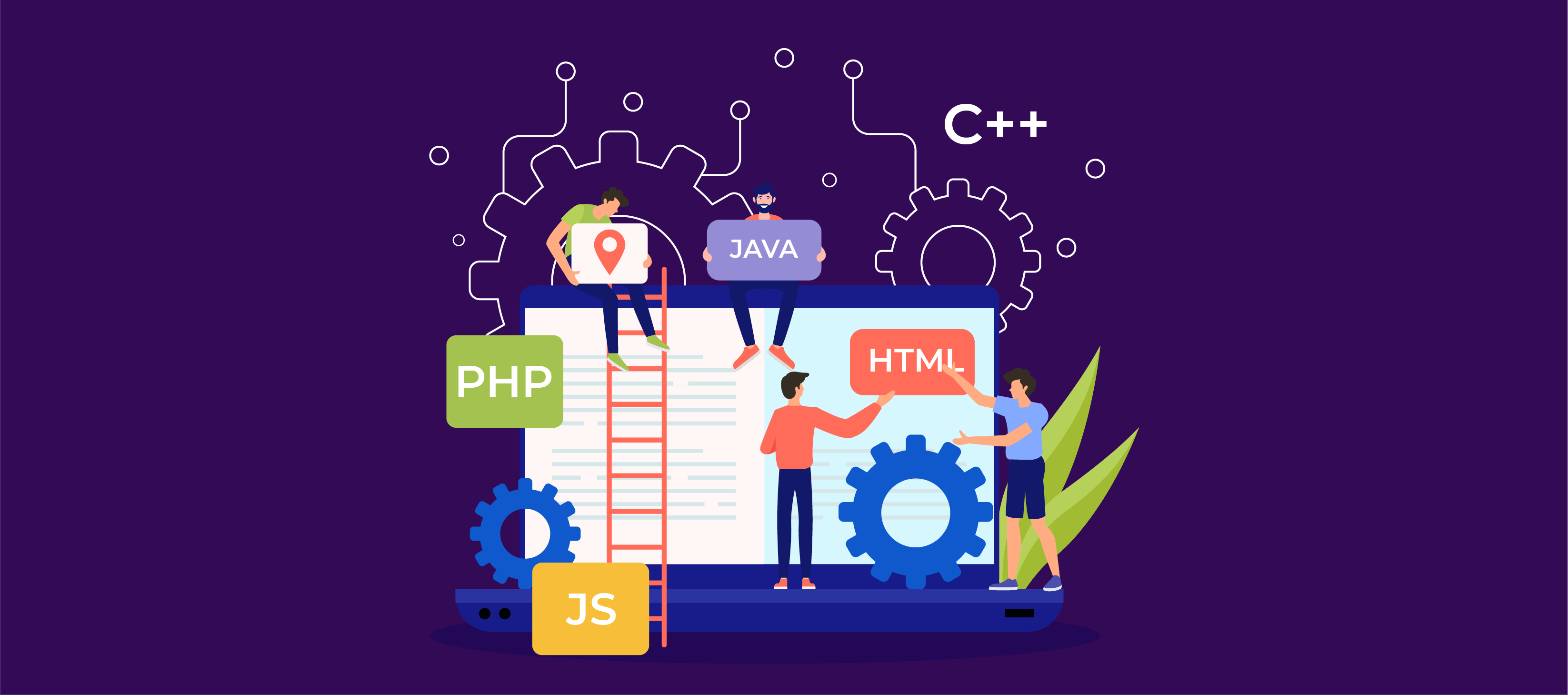
| Framework | Language | Type | Examples |
|
React |
JavaScript | Frontend | Facebook, Instagram, Netflix |
|
Angular |
JavaScript | Frontend | Google, Microsoft, IBM |
|
Vue.js |
JavaScript | Frontend | Alibaba, Xiaomi, GitLab |
|
Django |
Python | Backend | Instagram, Mozilla, Pinterest |
|
Express.js |
JavaScript | Backend | Accenture, Uber, Mozilla |
|
Ruby on Rails |
Ruby | Backend | Airbnb, GitHub, Shopify |
|
Laravel |
PHP | Backend | BBC, Pfizer, Toyota |
|
Flask |
Python | Backend | Netflix, Reddit, Uber |
|
Spring |
Java | Full-stack | Spring Boot, Spring MVC, Spring Security, Spring Data JPA |
|
ASP.NET MVC |
C# | Full-stack | ASP.NET Identity, Entity Framework, Razor Pages, SignalR |
|
Meteor |
JavaScript | Full-Stack | IKEA, Mazda, Qualcomm |
|
Ember.js |
JavaScript | Frontend | LinkedIn, Netflix, Square |
|
Backbone.js |
JavaScript | Frontend | Foursquare, Hulu |
|
Knockout.js |
JavaScript | Front-end MVVM | Knockout Components, Custom Bindings, KO Lite |
|
Flask-RESTful |
Python | Back-end API | Flask JWT, Flask SocketIO, Flask-Cors, Flask-Admin |
|
Alpine.JS |
JavaScript | Front-end JavaScript framework | Pcmag, devdojo |
|
ASP.NET Web API |
C# | Back-end API | ASP.NET Web API 2, OWIN, Swashbuckle, Autofac |
|
Nest.js |
TypeScript | Full-stack | Nest.js CLI, TypeORM, GraphQL, Passport.js |
|
Flask-SQLAlchemy |
Python | Back-end ORM | Flask-RESTful, Flask-JWT-Extended, Flask-Caching, Flask-Migrate |
|
CodeIgniter |
PHP | Backend | Open Source Point of Sale, PyroCMS, Busted Nuts |
1. React:
One of the best framework for web development is React. It is a widely-used and highly popular JavaScript library developed and maintained by Facebook. React allows developers to create highly dynamic and interactive user interfaces by breaking the UI into reusable components. It also offers a virtual DOM, which helps optimize web application performance.
Features of React:
- Component-Based Architecture: React follows a component-based architecture, meaning developers can break down the user interface into small, reusable components.
- Virtual DOM: React uses a virtual DOM, a lightweight copy of the actual DOM. This helps to improve the application’s performance by reducing the number of times the actual DOM is updated.
- Hooks: React introduced Hooks in version 16.8, which allows developers to use state and other React features in functional components. This makes writing and managing code in a functional programming style easier.
2. Angular:
Angular is a widely used frontend framework by Google for building dynamic web applications. It follows the MVVM (Model-View-ViewModel) architectural pattern and provides powerful features for building complex applications.
Features of Angular:
- Dependency injection: Angular provides a powerful mechanism that makes managing the dependencies between components and services easy.
- Directives: Angular provides built-in directives allowing developers to extend HTML with new attributes and behaviours.
- Reactive programming: Angular supports reactive programming with RxJS, which allows developers to build responsive and scalable applications.
- Testing: Angular provides a robust testing framework that allows developers to write unit and end-to-end tests for their applications.
3. Vue.js:
Vue.js is another popular frontend framework for building user interfaces. It is known for its simplicity and flexibility, making it easy to integrate into existing projects and build scalable applications.
Features of Vue.js:
- Lightweight: Vue.js is a lightweight framework easily integrated into other projects, making it a good choice for small to medium-sized applications.
- Data binding: Vue.js provides two-way data binding, which means changes in the UI are reflected in the data and vice versa, without having to write additional code.
- Customizable: Vue.js is highly customizable, allowing developers to add plugins, customize the build process, and integrate it with other libraries and frameworks.
4. Django:
Django is a high-level backend framework for web development using Python that follows the model-template-view (MTV) architectural pattern. It is designed to simplify and speed up web development by providing tools and libraries for building web applications with a robust and scalable backend.
Features of Django:
- Scalability: Django is designed to be scalable, with built-in support for caching, load balancing, and other features that enable web applications to handle large amounts of traffic.
- URL Routing: Django’s URL routing system enables developers to map URLs to views, which are Python functions that handle HTTP requests.
- Admin Interface: Django provides a built-in admin interface that allows developers to create, read, update, and delete (CRUD) records from the database without writing any code.
5. Express.js:
Express.js is a popular backend framework for building web applications using Node.js and JavaScript. It is lightweight and flexible, ideal for building APIs and server-side applications.
Features of Express.js:
- Routing: Express.js provides a flexible and easy-to-use routing system that allows developers to define URL routes for incoming requests.
- Error handling: Express.js provides a built-in error-handling middleware that can be used to catch and handle errors that occur during request processing.
- Security: Express.js provides several security features, such as input validation, CSRF protection, and XSS protection, to help developers build secure web applications.
6. Ruby on Rails:
Ruby on Rails, often referred to as Rails, is a full-stack framework for web development that builds web applications using the Ruby programming language. It follows the Model-View-Controller (MVC) architectural pattern and provides a set of conventions and libraries to simplify web development.
Features of Ruby on Rails:
- Convention over Configuration: Rails follows the principle of “convention over configuration,” which means that the framework makes assumptions about how your application is structured and where files should be located.
- RESTful Routing: Rails makes it easy to build RESTful APIs by providing a set of conventions for routing and handling HTTP requests.
- Gems: Ruby on Rails has a rich ecosystem of third-party libraries and tools called “gems.” These can be easily integrated into your application to add new functionality or improve performance.
7. Laravel:
Laravel is a widely used backend framework for building web applications using PHP. It follows the MVC pattern and provides an elegant syntax and powerful features for building scalable applications.
Features of Laravel:
- Blade Templating Engine: Laravel’s Blade templating engine provides a powerful and simple way to create dynamic views and layouts for your web application.
- Eloquent ORM: Laravel’s Eloquent ORM (Object-Relational Mapping) provides an easy and intuitive way to work with databases, allowing you to create, read, update, and delete records easily.
- Events: Laravel’s event system allows you to easily implement and listen for custom events in your application, making decoupling different parts of your code easy.
8. Flask:
Flask is a lightweight, flexible backend framework for building Python web applications. It is known for its simplicity and ease of use, making it a popular choice for small to medium-sized projects.
Features of Flask:
- Lightweight: Flask is a lightweight framework that is easy to install and does not require particular tools or libraries.
- Flexible: Flask is a highly flexible framework that allows developers to customize and extend its functionality easily.
- Scalable: Flask is designed to be scalable, so it can be used to build small applications as well as large and complex ones.
9. Spring:
Spring is a widely used backend framework for web development using Java. It provides a comprehensive programming and configuration model for modern Java-based enterprise applications. Additionally, the framework is known for its modular architecture, allowing developers to choose the necessary components and easily integrate them into their applications.
Features of Spring:
- Dependency Injection: Spring’s core feature is its support for dependency injection. This means that objects are loosely coupled, making managing and maintaining them easier.
- AOP Support: Spring supports Aspect-Oriented Programming (AOP), which allows developers to modularize cross-cutting concerns such as logging and security.
- Lightweight: Spring’s small footprint makes it easy to deploy and run on various systems.
10. ASP.NET MVC:
ASP.NET MVC is a popular backend framework for building web applications using Microsoft’s .NET framework and C#. It follows the MVC pattern and provides comprehensive tools for building scalable and secure applications.
Features of ASP.NET MVC:
- Separation of concerns: ASP.NET MVC separates the application logic into three parts: Model, View, and Controller, making it easier to maintain and modify the code.
- Routing: ASP.NET MVC has a powerful routing engine that allows developers to map URLs to controller actions easily.
- Built-in authentication and authorization: ASP.NET MVC provides built-in user authentication and authorization features, making it easier to secure web applications.
- Extensibility: ASP.NET MVC is highly extensible and can be customized to fit the specific needs of a project.
11. Meteor:
Meteor is a full-stack JavaScript framework for building web applications using Node.js. It allows for real-time data updates, making it ideal for building collaborative applications like chat and social networks.
Features of Meteor:
- Real-time updates: Meteor provides real-time updates, which means that changes made to the application are immediately reflected in the user interface.
- Database integration: Meteor has built-in database integration, making storing and retrieving data from the database easier.
- Easy deployment: Meteor makes deploying applications to the cloud or any server easy.
- Simplified frontend development: Meteor simplifies frontend development by providing a range of pre-built UI components and templates.
12. Ember.js:
Ember.js is a front-end framework for building ambitious web applications. It follows the MVVM pattern and provides a set of conventions and features for building large-scale applications with complex UI interactions.
Features of Ember.js:
- Two-way data binding: Ember.js provides two-way data binding, which means that any changes made to the data model are automatically reflected in the UI and vice versa.
- Components: Ember.js has a component-based architecture, making creating reusable and modular UI components easier.
- Add-ons: Ember.js has a vibrant community of developers who have created a wide range of add-ons and plugins that can be easily integrated into an application.
13. Backbone.js:
Backbone.js is a popular JavaScript framework for building scalable and maintainable web applications. It provides a structured way to organize your client-side code and enables you to manage data, events, and application logic easily.
Features of Backbone.js:
- Event-Driven Programming: Backbone.js provides a powerful event system, allowing different components of your application to communicate and respond to changes.
- Cross-Browser Compatibility: Backbone.js works across all modern web browsers, including Internet Explorer 8 and above.
- Templates: Backbone.js allows you to use templates to render views, making creating dynamic and interactive user interfaces easy.
14. Knockout.js:
Knockout.js is a frontend framework for building dynamic web applications using the MVVM pattern. It provides data-binding and dependency-tracking features, making it easy to build responsive and interactive UIs.
Features of Knockout.js:
- Declarative bindings: Knockout.js provides declarative bindings that allow developers to bind data to the UI without writing complex code.
- Automatic UI updates: Knockout.js automatically updates the UI when the data changes, making creating dynamic and interactive web applications easier.
- Dependency tracking: Knockout.js tracks dependencies between data and UI elements, making it easier to manage complex UIs.
- Customizable: Knockout.js is highly customizable and can be extended with plugins and custom bindings.
15. Flask-RESTful:
Flask-RESTful is a lightweight and flexible framework for building RESTful APIs using Python and Flask. It provides tools for handling authentication, routing, and serialization, making it easy to build scalable APIs.
Features of Flask-RESTful:
- Lightweight: Flask-RESTful is a lightweight framework that is easy to learn and use.
- Modular: Flask-RESTful is highly modular, so developers can easily add or remove features.
- Secure: Flask-RESTful provides built-in security features, such as token authentication and encryption, to help protect against attacks.
- Scalable: Flask-RESTful is designed to be scalable, making handling large amounts of traffic and requests easy.
16. Alpine.JS:
Alpine.js is a lightweight, declarative JavaScript framework designed for building interactive web applications with minimal overhead. It allows you to enhance the behaviour of your HTML without having to write a lot of JavaScript code. With Alpine.js, you can easily add dynamic behaviour to your HTML elements, such as showing and hiding elements, updating data, handling user input, and more.
Feature of Alpine.JS:
- Declarative syntax: Alpine.js uses HTML attributes to add behaviour to your application, making it easy to read and understand.
- Lightweight: With a small file size and minimal overhead, Alpine.js is fast and efficient.
- Reactive data: Alpine.js provides a simple way to manage and update data in your application, making it easy to create dynamic user interfaces.
- Component-based: Alpine.js allows you to create reusable components that can be used throughout your application, improving code organization and reducing duplication.
17. ASP.NET Web API:
ASP.NET Web API is a powerful framework for building RESTful APIs using Microsoft’s .NET framework and C#. It provides a comprehensive set of features for building secure and scalable APIs.
Features of ASP.NET Web API:
- Filters: ASP.NET Web API includes a powerful filter system that allows developers to apply cross-cutting concerns to their services, such as authentication, logging, and caching.
- Dependency injection: ASP.NET Web API supports dependency injection, making it easy to write testable and maintainable services.
- OData support: ASP.NET Web API includes built-in support for OData, a standardized protocol for building and consuming RESTful APIs.
18. Nest.js:
Nest.js is a backend framework for building scalable and maintainable web applications using Node.js and TypeScript. It follows the modular architecture pattern and provides powerful features for building APIs and server-side applications.
Features of Nest.js:
- Modular architecture: Nest.js follows a modular architecture approach, allowing developers to organize their applications into modules, each with its controllers, services, and other components.
- Expressive syntax: Nest.js provides an expressive syntax for defining routes, middleware, and other application components.
- WebSockets support: Nest.js provides built-in support for WebSockets, a protocol allowing real-time communication between the client and server.
19. Flask-SQLAlchemy:
Flask-SQLAlchemy is a popular backend framework for building web applications using Python and Flask. It provides powerful integration with SQL databases, making it easy to handle database operations and build data-driven applications.
Features of Flask-SQLAlchemy:
- Querying database: Flask-SQLAlchemy makes it easy to query the database using Python.
- Transactions: Flask-SQLAlchemy supports transactions, allowing you to perform multiple database operations as a single atomic transaction.
- Debugging: Flask-SQLAlchemy provides helpful debugging tools that make diagnosing and fixing database issues easy.
20. CodeIgniter:
CodeIgniter is a popular PHP web application development framework that follows the Model-View-Controller (MVC) architecture. It provides developers with tools and libraries to quickly build web applications without requiring them to write repetitive code.
Features of CodeIgniter:
- Extensible: CodeIgniter is extensible, meaning developers can add new functionality to the framework by writing their libraries, helpers, and plugins.
- Good Documentation: CodeIgniter has excellent documentation that includes a user guide, a developer guide, and an API reference.
- Large Community: CodeIgniter has many developers who contribute to the framework by creating plugins, extensions, and themes.
How have Web Development Frameworks simplified the process of creating apps?
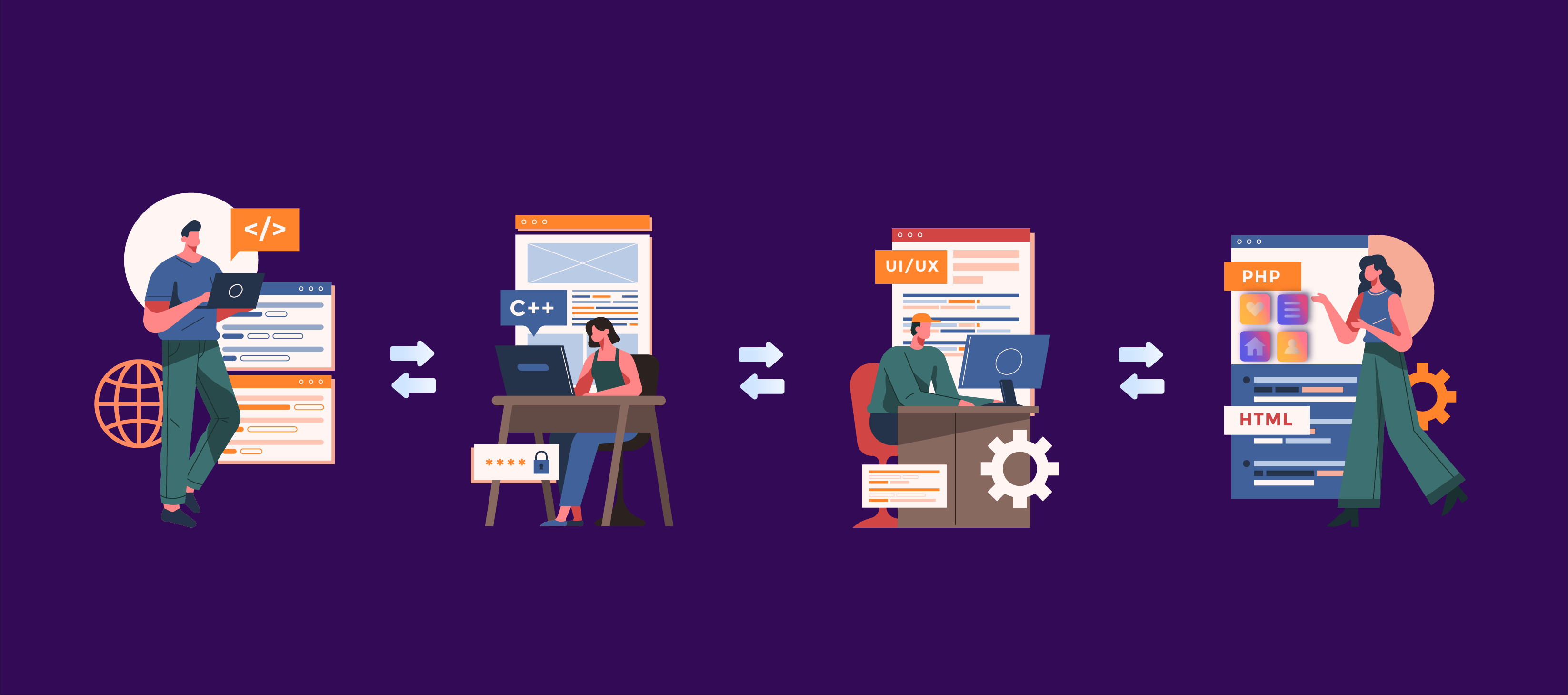
Web development frameworks have greatly simplified the process of creating apps by providing pre-built tools, libraries, and conventions that streamline the development process. Here are some ways in which framework for web development have simplified app creation:
- Faster Development: Web development frameworks provide pre-built components, libraries, and templates that can be easily reused, reducing the need to write code from scratch. This speeds up the development process as developers can leverage the existing functionality provided by the framework, saving time and effort.
- Consistent Architecture: Frameworks follow a specific architectural pattern, such as MVC (Model-View-Controller) or MVVM (Model-View-ViewModel), which provides a consistent structure and organization for the app’s codebase. This makes the codebase easier to understand, maintain, and debug.
- Abstraction of Complex Tasks: Frameworks often abstract complex tasks such as database integration, routing, and authentication, providing simplified APIs or methods to handle these tasks. This allows developers to focus on building the app’s core features without getting bogged down by the complexities of these tasks.
- Reusability and Scalability: Web development frameworks promote code reusability by providing modular components easily plugged into different app parts. This makes it easier to scale the app by adding new features or changing existing ones without disrupting the entire codebase.
- Community Support: Most web development frameworks have a strong community of developers who contribute to their development and provide support through documentation, forums, and online resources. This makes it easier for developers to find solutions to common issues and get help when needed, reducing development time and effort.
- Cross-platform Development: Many web development frameworks allow for cross-platform development, enabling the creation of apps that can be run on multiple platforms, such as desktop, mobile, and web. This saves time and effort by leveraging a single codebase to create apps for multiple platforms.
- Enhanced Security: Web development frameworks often provide built-in security features, such as authentication, input validation, and protection against common web vulnerabilities, to help developers build secure apps without reinventing the wheel.
How to Select the Best Framework for Web Development
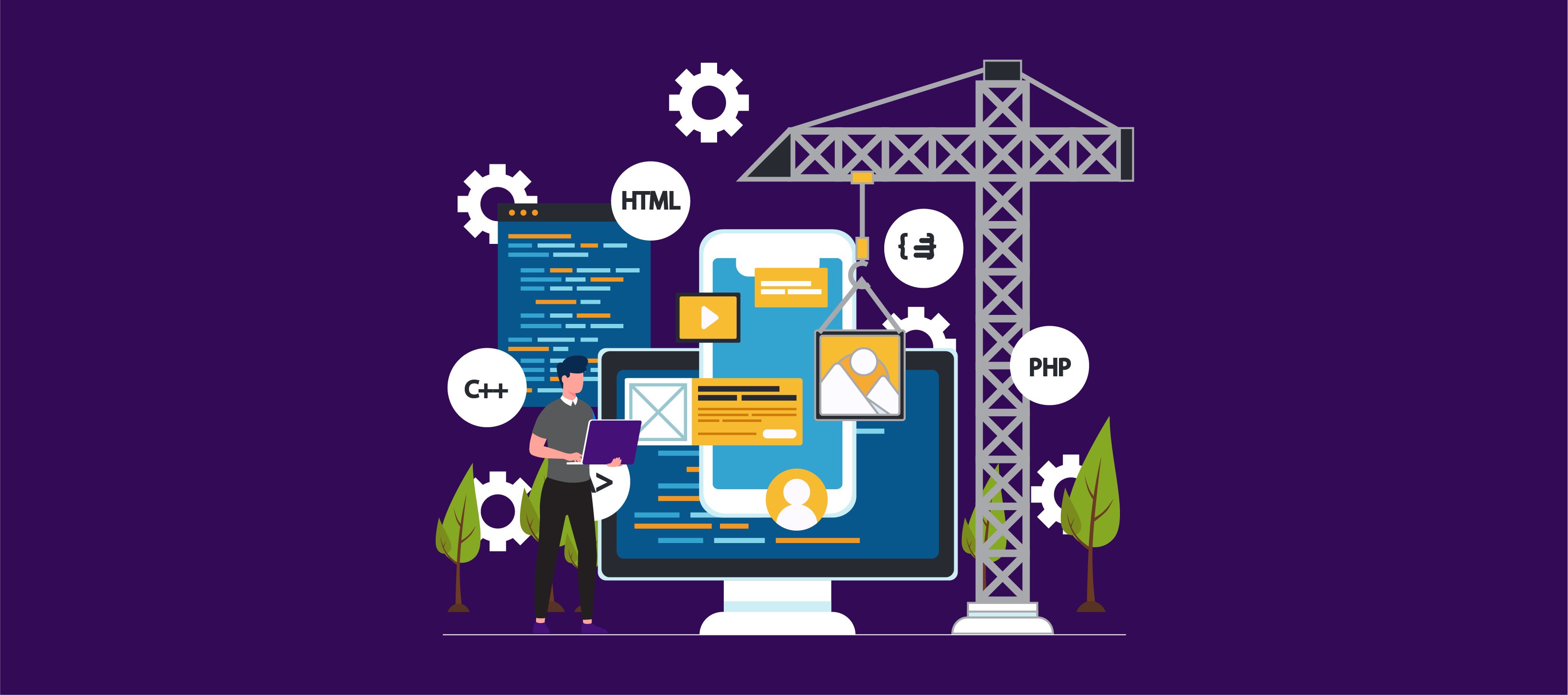
Selecting the best web development framework for your project can be a crucial decision that impacts the efficiency and success of your development process. Here are some steps to help you select the best framework for web development:
- Define Your Project Requirements: Understand the requirements of your project, such as the type of application you are building (e.g., web app, mobile app, API), the complexity of the features you need, the scalability requirements, and the technologies you want to use (e.g., programming language, database). This will help you identify the key features and functionality you need from a framework.
- Research and Evaluate Options: Conduct thorough research on the available web development frameworks that match your project requirements. Consider factors such as popularity, community support, documentation, stability, updates, and licensing. Look for frameworks that have an active and supportive community, regular updates, and good documentation, as these factors can impact the ease of development and future maintenance of your project.
- Consider Your Familiarity with Technology: Consider your team’s familiarity and expertise with the programming language and technology stack associated with the framework. If you have a team with expertise in a specific programming language, choosing a framework that aligns with their expertise may be more efficient to avoid a steep learning curve.
- Check Flexibility and Extensibility: Look for flexible and extensible frameworks allowing you to customize and extend their functionality based on your project’s specific requirements. A flexible and extensible framework will give you more control and adaptability in building your application.
- Evaluate Documentation and Support: Good documentation and support are essential for smooth development. Look for frameworks with comprehensive documentation, tutorials, and active community support forums. This will ensure you have access to resources and help during the development process.
- Consider Performance and Security: Evaluate the performance and security aspects of the framework. Look for frameworks optimized for performance with built-in security features such as authentication, input validation, and protection against common web vulnerabilities. Security should be a top priority for any web application.
- Test and Experiment: Once you have narrowed your options, try building a small prototype or proof of concept using the shortlisted frameworks to get a hands-on experience with their features, syntax, and ease of use. This will help you assess the development experience and determine which framework best fits your project.
- Consider Long-term Maintenance: Consider the long-term maintenance and sustainability of the framework. Look for frameworks that are actively maintained, have regular updates, and have a strong community support base. This will ensure your application remains up-to-date, secure, and compatible with future technologies.
Overall, selecting the best web development framework involves understanding your project requirements, researching and evaluating options, considering your familiarity with technology, checking flexibility and extensibility, evaluating documentation and support, considering performance and security, testing and experimenting, and considering long-term maintenance. By following these steps, you can make an informed decision and choose a framework that aligns with your project requirements and development team’s expertise, ultimately leading to a successful web development project.
Final Words
In conclusion, the world of web development is constantly evolving, and staying updated with the latest frameworks is crucial for building modern and efficient web applications in 2023. The 20 best frameworks discussed in this blog are expected to be the go-to tools for web developers in the coming year, offering unparalleled features, community support, and ease of use.
As a web development company, we are committed to staying at the forefront of technology trends, and we highly recommend considering these frameworks for your next web development project. So, don’t miss out on the opportunity to leverage the best frameworks for web development in 2023. Stay ahead of the competition and create outstanding web applications with these top frameworks. Contact us today to learn more about how our web development expertise can help you bring your vision to life using these innovative frameworks. Let’s build the future of the web together!
FAQs
Question 1: What are some popular framework for web development in 2023?
Some popular web development frameworks in 2023 include React, Angular, Vue.js, Django, Laravel, Express, Flask, ASP.NET Core, Ruby on Rails, and Spring.
Question 2: How do you choose the best web development framework for my project?
To choose the best web development framework for your project, consider factors such as your project requirements, the team’s familiarity with technology, flexibility and extensibility, documentation and support, performance and security, testing and experimentation, and long-term maintenance.
Question 3: Which web development framework is best for building single-page applications (SPAs)?
Some popular web development frameworks for building single-page applications (SPAs) are React, Angular, and Vue.js. These frameworks are designed to create interactive and dynamic user interfaces for SPAs.
Question 4: What are some popular backend web development frameworks?
Some popular backend web development frameworks include Django (Python), Laravel (PHP), Express (Node.js), Flask (Python), ASP.NET Core (C#), Ruby on Rails (Ruby), and Spring (Java).
Question 5: What are some popular front-end web development frameworks?
Some popular front-end web development frameworks include React, Angular, Vue.js, Ember.js, and Backbone.js. These frameworks build interactive user interfaces and handle client-side logic in web applications.
Question 6: Are there any popular web development frameworks for mobile app development?
Yes, there are several popular web development frameworks for mobile app development, such as React Native, Ionic, and Flutter. These frameworks allow developers to build cross-platform mobile apps using web technologies such as HTML, CSS, and JavaScript.
Question 7: What are some web development frameworks for building APIs (Application Programming Interfaces)?
Some popular web development frameworks for building APIs include Express (Node.js), Django (Python), Flask (Python), ASP.NET Core (C#), and Ruby on Rails (Ruby). These frameworks provide tools and functionality for building APIs that can be used to integrate different systems and services.
Question 8: Which web development frameworks are best for beginners?
Some web development frameworks that are considered beginner-friendly are Flask (Python), Express (Node.js), Laravel (PHP), and Ruby on Rails (Ruby). These frameworks have a simple syntax, comprehensive documentation, and active community support, making them suitable for beginners starting their web development journey.
Question 9: Can you use multiple web development frameworks in a single project?
Yes, it is possible to use multiple web development frameworks in a single project. However, additional configuration and integration efforts may be required to ensure smooth interoperability between different frameworks. It is important to carefully plan and architect the project to avoid conflicts and complexities.
Question 10: How frequently do web development frameworks get updated?
The frequency of updates for web development frameworks varies depending on the framework and its community. Some frameworks may have more frequent updates with regular releases, while others may have less frequent updates. Choosing a framework with active maintenance and regular updates is important to ensure security, performance, and compatibility with the latest technologies.

